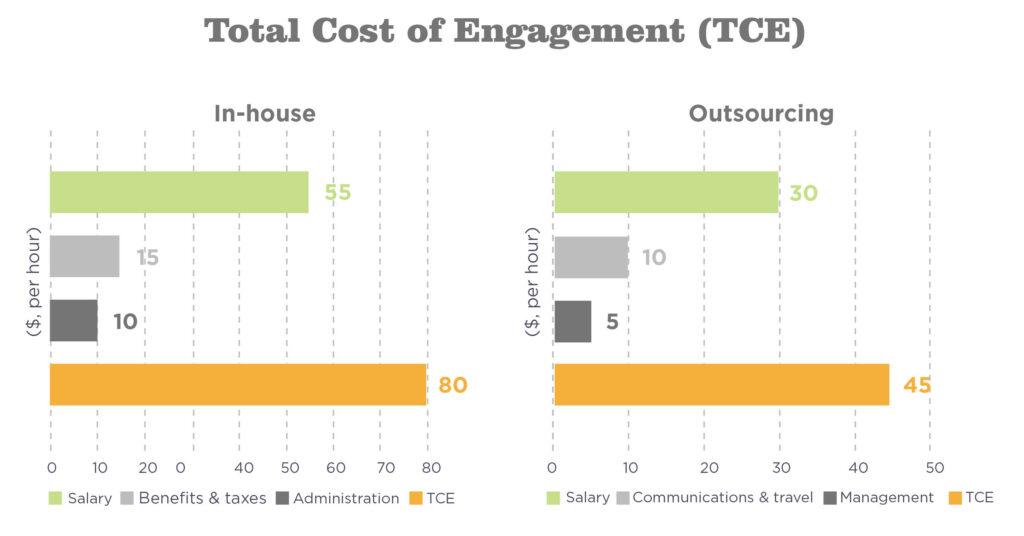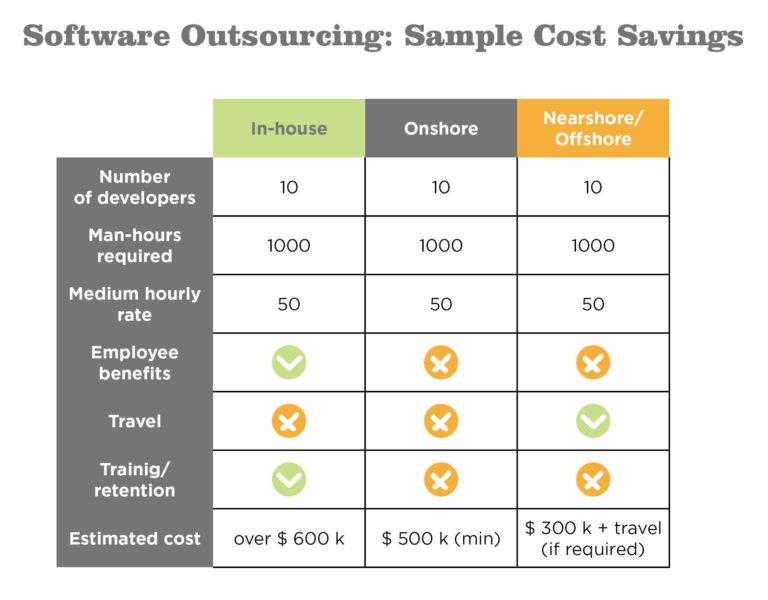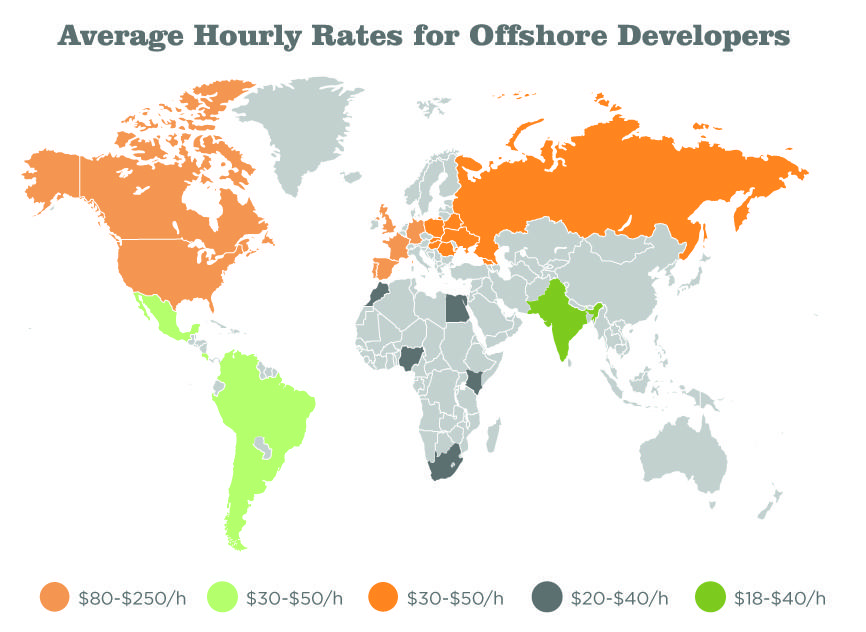5 reasons why your start-up needs to outsource IT development


Almost half of IT outsourcing projects are not delivered on time, exceed budget or come to a standstill. Nevertheless, US and Western European companies continue to outsource software development to nearshore and offshore vendors. Although IT experts claim it’s the access to new talent pools and focus on long-term partnerships that now drive their decisions, cost reduction remains the cornerstone of IT outsourcing. Does your start-up need to outsource IT – and software development in particular? (Read more: insights of great outsources selection: “Guide to outsourcing software development“)
Why & how to outsource software development?
There are several reasons to consider outsourcing software dev to another company:
- Software is just a tool that will make your company more productive and efficient – and not the focus of your business as such;
- You carry out IT projects once in a while, but it’s not your major, and you don’t want to employ developers, QA engineers and designers full time;
- You live and work in an “expensive” country where programmers charge $ 100+ per man-hour;
- You’ve previously worked with freelancers, and it has been a disappointing experience (self-employed software engineers often lack project management, communication, and teamwork skills – and that’s not to mention the quality of code written by a bunch of people living a thousand miles away from each other);
- As a start-up, you’re operating on a shoestring and, therefore, cannot afford to rent a larger office and employ an in-house team.

Now, there are three ways you can do it:
- You can partner with a software development agency based in your own country (that’s what they call onshore outsourcing). In this case, you’ll be able to save on office space, employee benefits, travel and thus reduce software development expenses by 10-15%. What are the major benefits of onshore outsourcing? First, you’ll be able to meet and interview programmers in person. Second, you’ll be more hands-on with the project. Finally, you will sign an agreement governed by the laws of your home country;
- You can find a software development company based in a neighboring country where your language is either spoken or widely used (that’s nearshore outsourcing). Nearshore vendors usually have lower hourly rates (down up to 30%), make use of popular project management tools like Redmine and Jira and are mentally close to you (we’ll soon talk about the importance of “vendor-customer” compatibility in detail);
- Finally, there’s offshore outsourcing – and that’s where the real cost savings come from. US and EU companies outsource software development to Latin America, Eastern and Central Europe, Baltic states and Asia where developers’ hourly rates range from as low as $ 8 per hour (Asian countries) to $ 50+ per hour (Estonia and Finland). By going offshore, you can reduce software development costs by up to 50%; however, there are several pitfalls you have to avoid. First, you should hire an experienced Project Manager (either onsite or permanently employed by the vendor you’re going to outsource software dev too) in order to overcome the language barrier and ensure transparency and smooth project execution. Second, you should choose your vendor wisely. $ 8 per hour is surely an irresistible offer; however, building software for 1/4 of the price is only great when the project is delivered on time and within the agreed budget. Employees from countries with higher Power Distance Index and strong collectivism values (Asia and Africa) usually make poor partners to open-minded, easy-going and straightforward Western entrepreneurs. Cultural differences often lead to misunderstandings – and that’s where prolonged deadlines and contract issues come from. Outsourcing to Europe (post-Soviet republics in particular) is the middle ground. Developers from Ukraine, Poland, Belarus and Baltic countries are well-educated, speak English, take part in international coding competitions on a regular basis, travel a lot and have a Western mindset. They’ve got no problem telling customers it’ll take twice as long to build the solution with this or that technology stack – and never fail to suggest alternatives.

Hourly rates aside, what else should you know about IT outsourcing?
Outsourcing costs depend on…
- The size of a company you’ll address. Outsourcing tycoons – that is, companies that employ 250+ developers, QA engineers, designers and Project Managers usually charge 10-15% less than their colleagues operating in the same region (simply because they have diverse portfolios and several “safety cushion” projects to stay afloat). However, they are slow at preparing estimates and getting started, which might be an issue for entrepreneurs working on cutting-edge technology solutions. Small companies (less than 50 employees) charge more and tend to pour their heart and soul into software dev projects. Working with a mid-size company (50-250 employees) might be the best option. You’ll get the average regional hourly rate ($ 25-40 per hour if you set eyes on Eastern Europe) and highly skilled developers who speak your language and make use of standard project management tools;
- The type of a software solution you need. Simple projects like mobile apps, hotel booking systems, and corporate websites are usually billed according to the Fixed Pricemodel, so you’ll be able to plan your expenses in advance. Outsourcing innovate projects (these include IoT and AI development) is another story. Without proper research and Proof of Concept, your vendor won’t be able to choose the right tech stack for your solution and make sure your idea is feasible – and you’ll have to pay for the actual hours spent on your project (Time & Material model). Also, you can hire a team of developers full time (the Dedicated Team approach). Your remote employees will devote 100% of their time and efforts to your project, and you’ll be able to manage them directly. In this case, however, you’ll have to provide the agreed amount of work to each member of your team (160 man-hours per month).

IT outsourcing for start-ups: here’s how we do it
What you need is a couple of start-up success stories to prove IT outsourcing really works.
One of our customers (a US-company that offers IoT analytics services to smart gadget manufacturers) used to work with a team of freelancers – and encountered multiple problems on the way. They decided to build the product in a single-vendor environment, contacted our company and managed to reduce the costs associated with debugging and Project Management by almost 40%!
Another example comes from a US start-up that provides out-of-the-box connectivity solutions for smart gadgets. The company evaluated the costs of setting up and running an in-house IT department and came to a conclusion it was cheaper to outsource embedded system development instead. They addressed Sirin Software and have never looked back!
Still in doubt?
Skype, the world’s most popular communication tool, was developed by an offshore team. Viber and MSQRD were created in Eastern Europe. Having topped $ 288 billion in 2013, the global IT outsourcing market has been growing at a CAGR of 5.84% ever since – and there are reasons for this. IT outsourcing is a great option for both start-ups and large non-tech companies that seek ways to reduce operating costs and gain a competitive advantage over rivals. Provided you address an experienced vendor and manage your project accordingly, you will succeed, too!
Contact us for consultation and discussion of your project requirements.
For more information and effective setup, you can tell us about your project details and we will help you find the best solution to achieve your business goals. Sirin Software is recognized by many companies. For example, softwaredevelopmentcompany.co has included us in rating Top .Net Development Companies and Top Software Development Companies In Chicago.